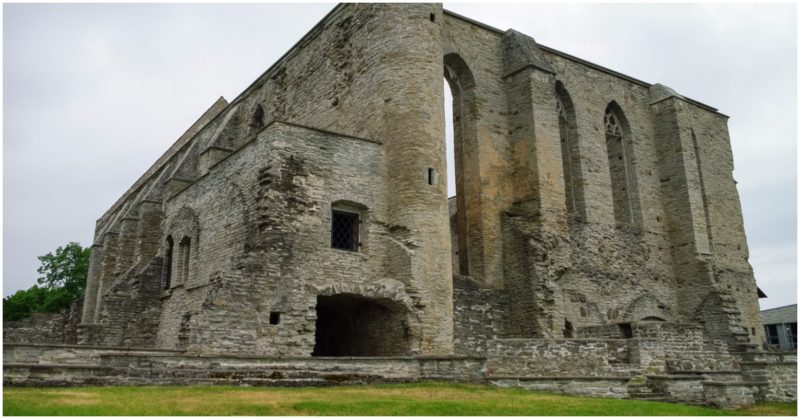The ruins of the St. Bridget’s Convent stand proudly near the banks of the Pirita River. It would, in its heyday, have dominated the landscape–today it is swallowed into a busy suburban district.
Abandoned for centuries, the shell of this imposing 15th century Gothic monastery in the suburban Pirita region of Tallinn, Estonia, is so well loved by the community that it has been preserved pretty much as it was left after it was decimated by Ivan the Terrible when brought his army across the border from Russia in 1577, during the Livonian War. Today, this peaceful refuge is also a popular open air concert venue, hosting events that range from classical music to heavy metal.

The idea of founding a monastery in Estonia’s capital city was born in 1400 by a group of merchants from the old city of Tallinn. They sought counsel from the Roman Catholic Augustinian Order of St. Birgetta (St. Bridget) in Sweden, and two monks from the Vadstena Abbey arrived in Tallinn in 1407 to begin the process. By 1417, the first permits were granted to source the stone required for building. The first four Bridgettine nuns had arrived in Estonia in 1412, but they still had some years to wait before the monastery was built.
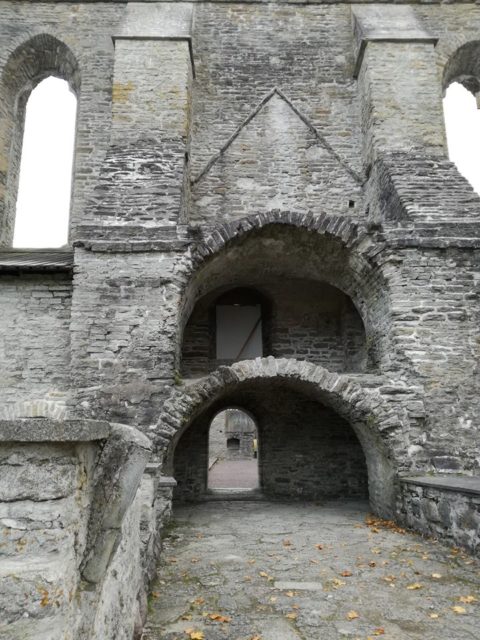
The main building was consecrated in 1436. The monastery, which housed both monks and nuns, grew to be the largest in Livonia (roughly present day Estonia and Latvia). They lived a peaceful monastic life for more than a century, a peace which was to be shattered by Ivan IV Vasilyevich, aka Ivan the Terrible. This ambitious Grand Prince of Moscow assumed the title Tsar and Grand Duke of all of Rus’ in 1547 and promptly set about expanding his empire.
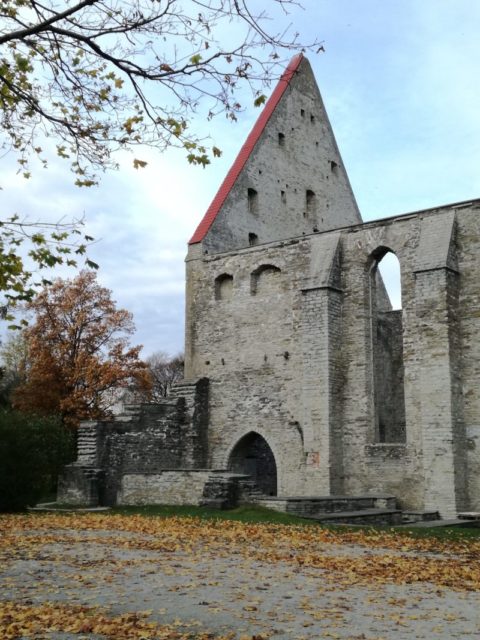
Among his many other campaigns, Ivan set his sights on the territory of Old Livonia. The Livonian war began in 1558 with the siege of Narva, a city where the Estonian–Russian border is still to this day guarded by a strongly fortified castle on each side of the river, and continued until 1583. It was in an effort to take control of the stone walled city of Tallinn that Ivan the Terrible and his troops fell upon the Pirita monastery. Unprotected by her city, more than 4 miles away, St. Bridget’s was plundered and set ablaze. Amazingly, the walls of the Abbey Church stayed upright, including the beautiful 112 feet (34 meters) high façade. Most of the other buildings were largely destroyed.
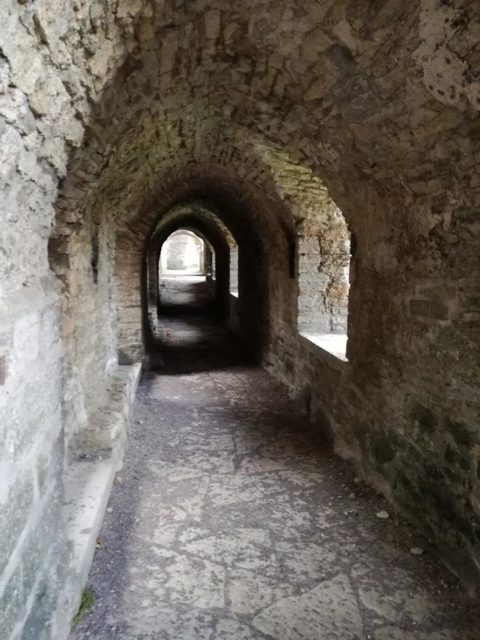
The Russian forces were finally defeated, but Livonia was split. The Swedish Duchy of Estonia encompassed the north of present day Estonia, and the south was part of the Polish–Livonian Duchy of Livonia. As the reach of the Swedish Empire stretched out during the early 1600s to include almost the entire Estonian region, St. Bridget’s was forgotten.
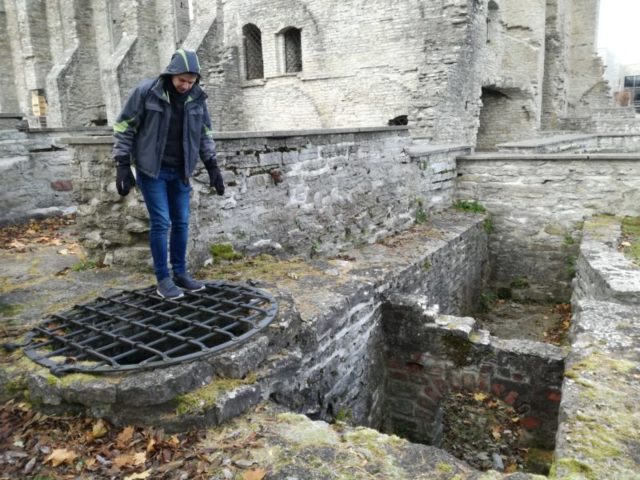
While local people continued to make use of the graveyard, the grand church and wrecked buildings remained ignored and overgrown as Estonia flourished. And remained so for hundreds of years. The monastery watched silently as the Great Northern War of 1700 to 1710 saw Russia once more take control of Estonia, until occupation by the Germans during the First World War paved the way for an uprising.
After 14 months of fighting, the country won its freedom. The Estonian Declaration of Independence was signed in February 1918 and a flood of national pride swelled throughout the country. However, the Bridgettine Order was not to be re-established in Estonia until 1990. After 22 years of independent rule, the Estonian peninsular succumbed once more to the might of its neighbor, Russia. Re-independence from the crumbling USSR finally came in 1991. This led to an even stronger sense of identity for the Estonian people and a strong cultural movement that pushed for the promotion of Estonian heritage.

Plans for restoration of St. Bridget’s Convent began in 1990. After some negotiation, ownership of the site was restored, and the Bridgettine Order was able to secure a plot of land adjacent to the old monastery where a new, modern convent, complete with chapel and guest house, would be built. The site underwent an extensive excavation and restoration project to uncover and preserve the remains of this once impressive campus. It is now cared for by the Sisters and open for visitors most days.
Visiting on a cold day in late fall, the stunning colors of the leaves still clinging to the surrounding trees contrast with the slightly eerie emptiness of the ruins. With a plan of the grounds printed on the entry ticket (2 euros), you can’t help but let your imagination transport you back to the 15th century as you explore the foundations of the convent and stand inside the vast roofless church.
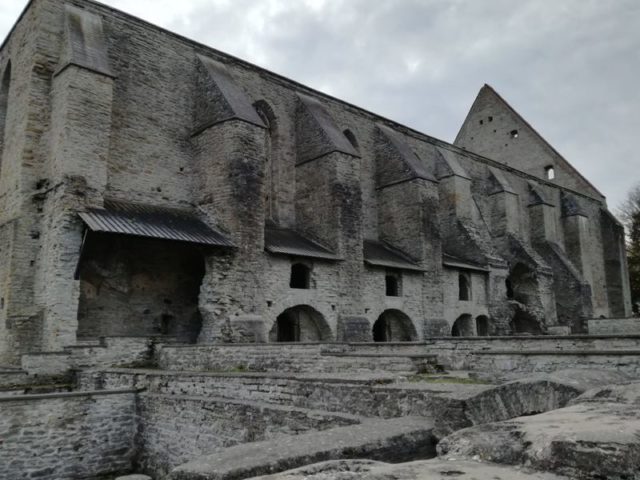
The nuns have hosted various one-off events throughout the years, most interestingly a cello tribute to Metallica in 2015, but their convent is also the venue to one of the most unique annual festivals in the Baltics.
Every August, the ruins are transformed into an open air torchlit opera house. The Birgitta Festival of the Tallinn Philharmonic Society has been held within the monastery walls every year since 2005 and continues to grow in popularity. The program includes an eclectic mix of classical music, contemporary dance, opera, ballet, and musical comedy. In 2018, it will run from 9 to 18 August.
